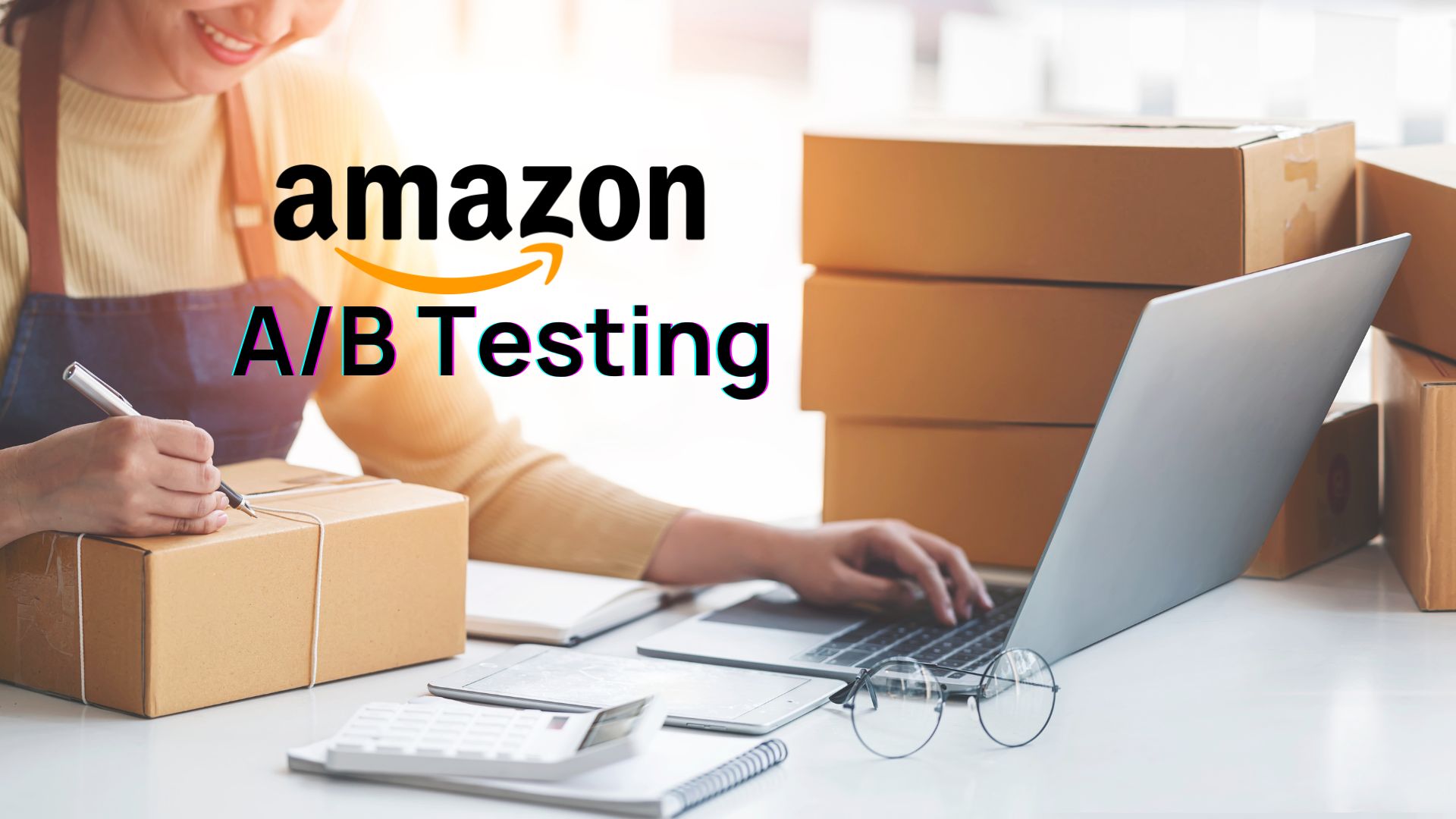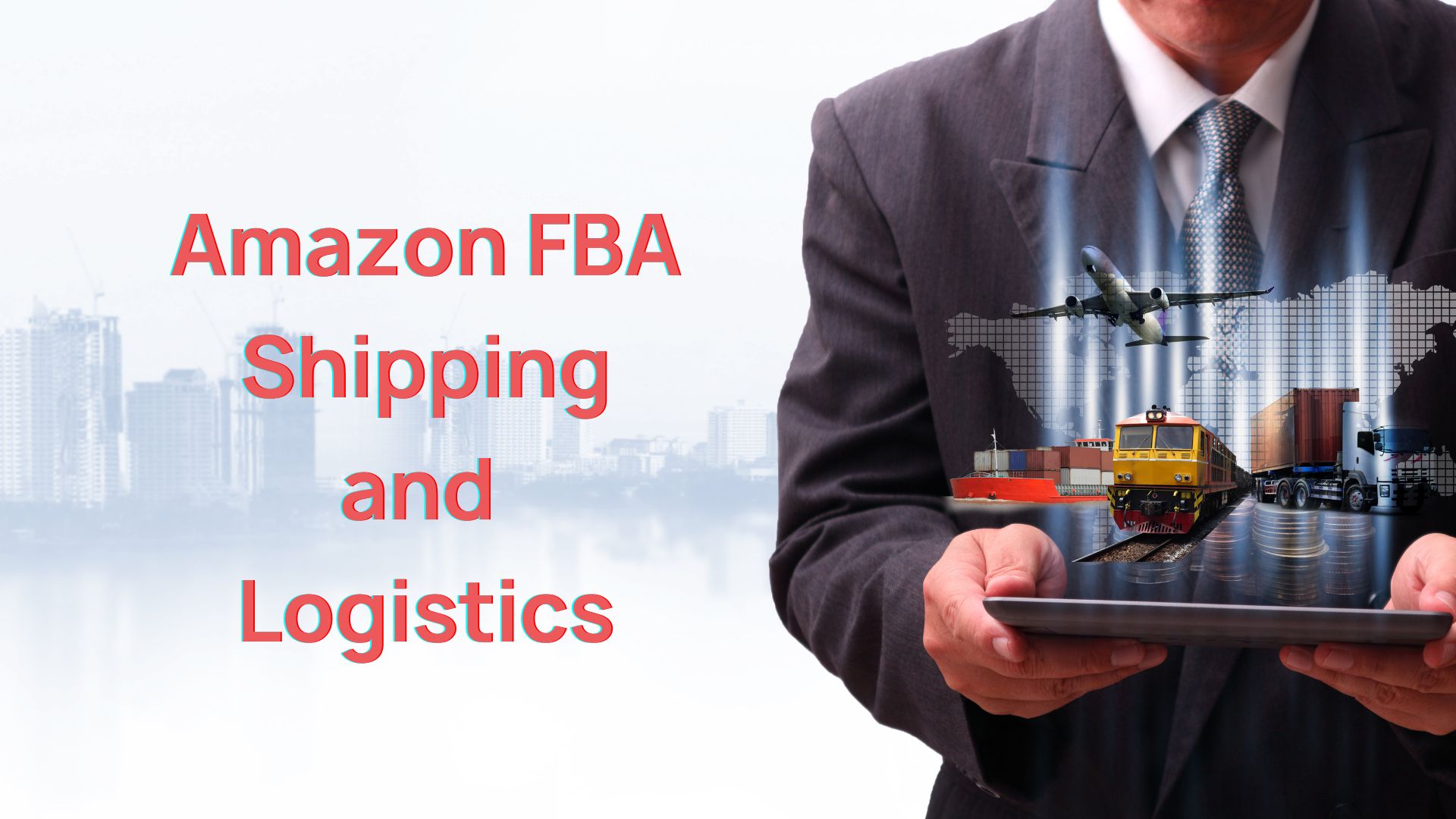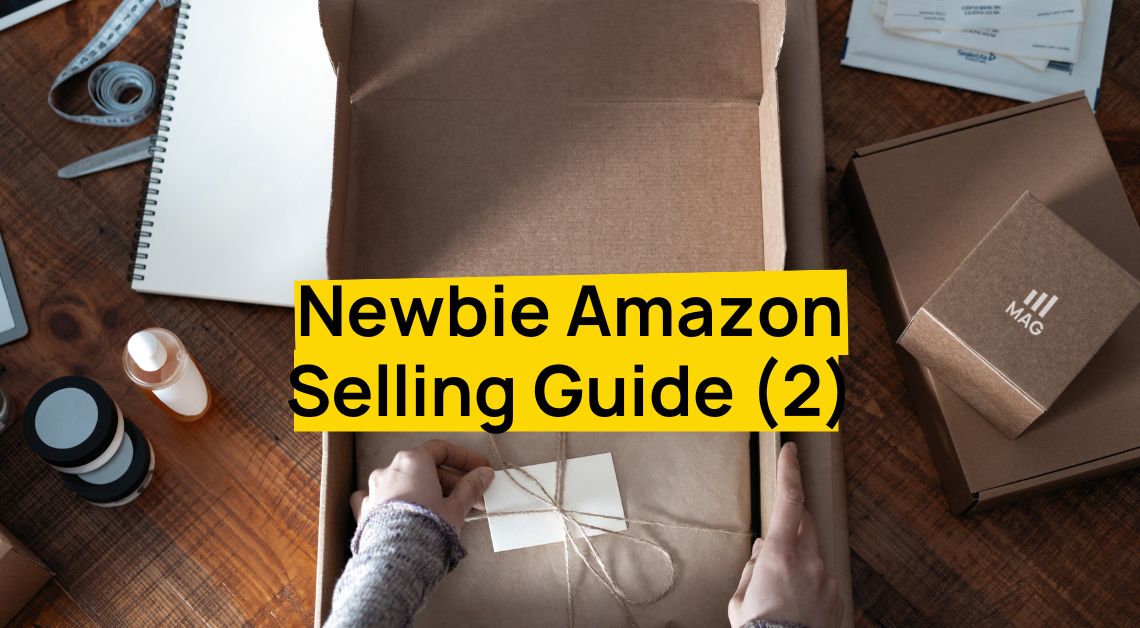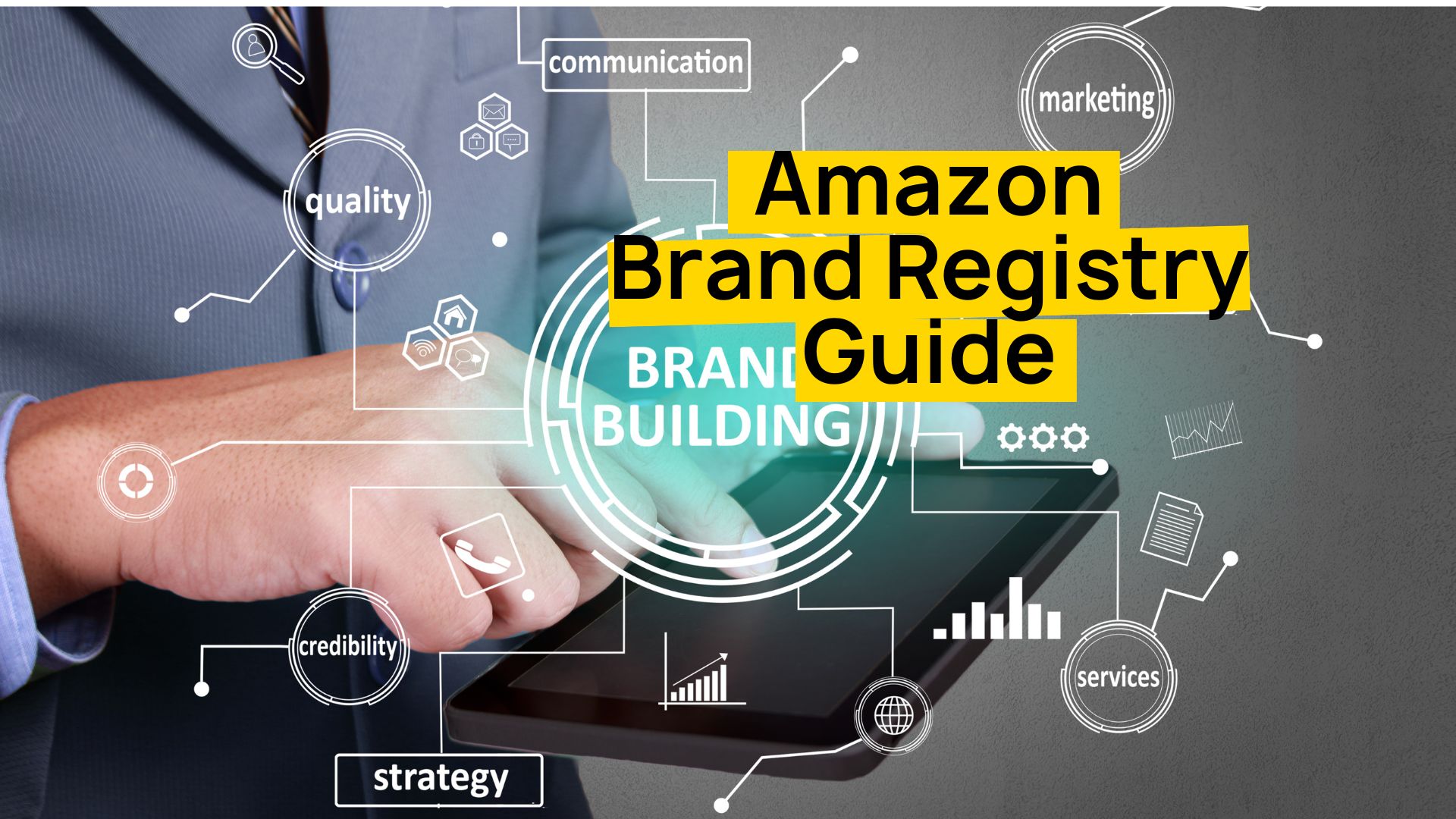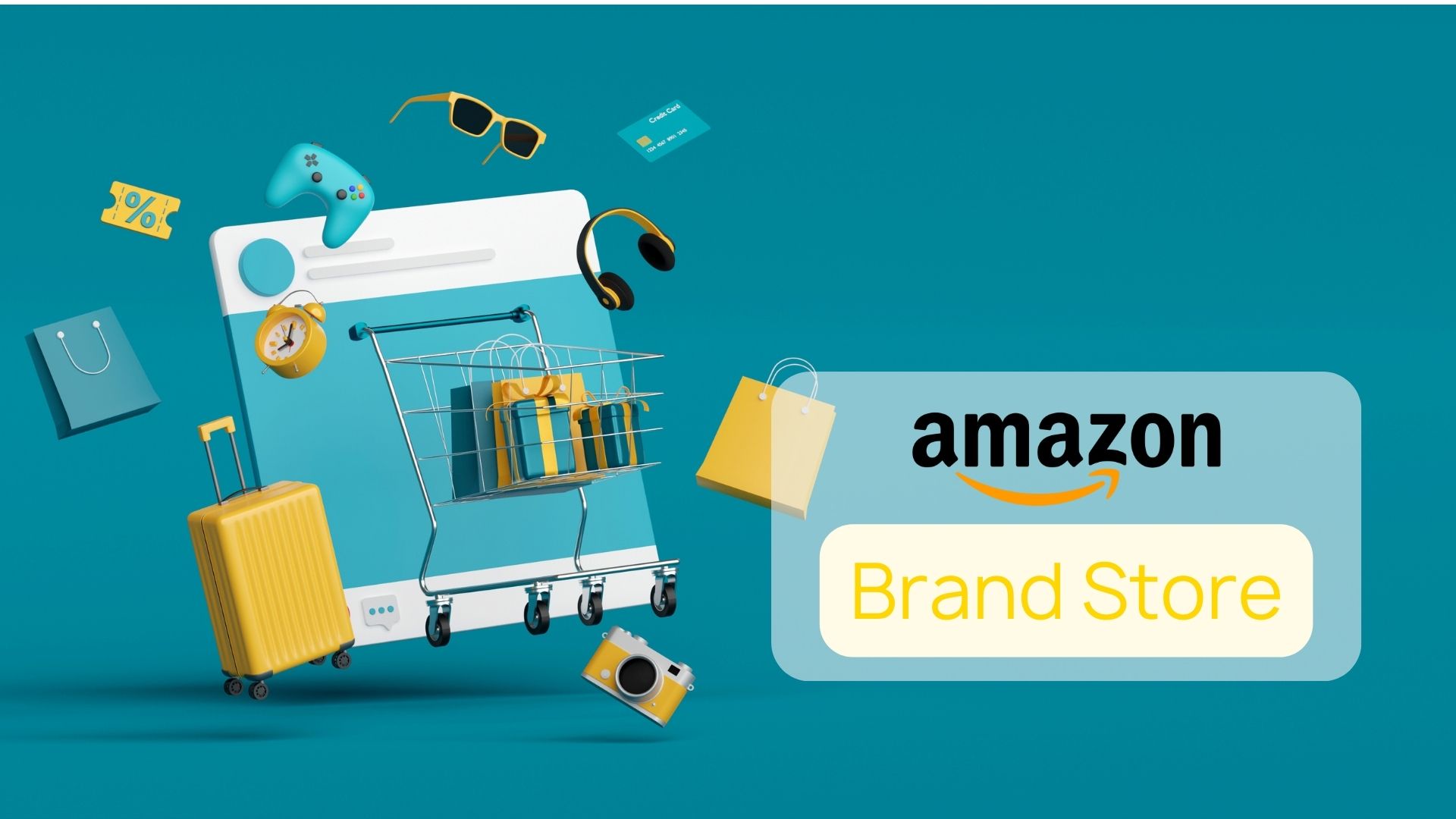How to Be Your Own Boss: A Guide to Amazon Wholesale Business
Struggling to make a profit on Amazon? You’re not alone. With millions of sellers competing for attention, it’s tough to stand out.
But what if there’s a secret to unlocking Amazon’s potential – a lucrative opportunity growing by 16% year-over-year? It’s wholesale selling, but it’s not for the faint of heart.
Solution: To succeed, you need expertise, strategy, and a deep understanding of the platform. I’ve created this comprehensive FBA (Fulfillment By Amazon) sellers guide for Amazon wholesale business. Get ready to learn the pros and cons, step-by-step instructions, and actionable tips to dominate the market and start profiting.
What is Amazon Wholesale Business?
It refers to selling popular, brand-name products without creating your own products from scratch.
The Key: Purchase large quantities of products from suppliers, distributors, or manufacturers and resell them individually to customers.
The Focus: Identify branded goods with existing consumer demand and tap into their popularity.
Wholesale selling on Amazon is a lucrative business model for entrepreneurs who want to capitalize on popular products without the hassle of creating their own.
How Does Amazon FBA Wholesale Business via FBA Works?
Set up shop
Create an Amazon seller account and get familiar with the platform.
Find your niche
Identify high-demand products with existing consumer interest.
Source your products
Purchase products in bulk from suppliers, manufacturers, or distributors to get the products you want to sell.
List and sell
List your products on Amazon using the brand’s existing listing or create a new one.
Grow your business
Manage inventory, sales, and more to maximize your profits.
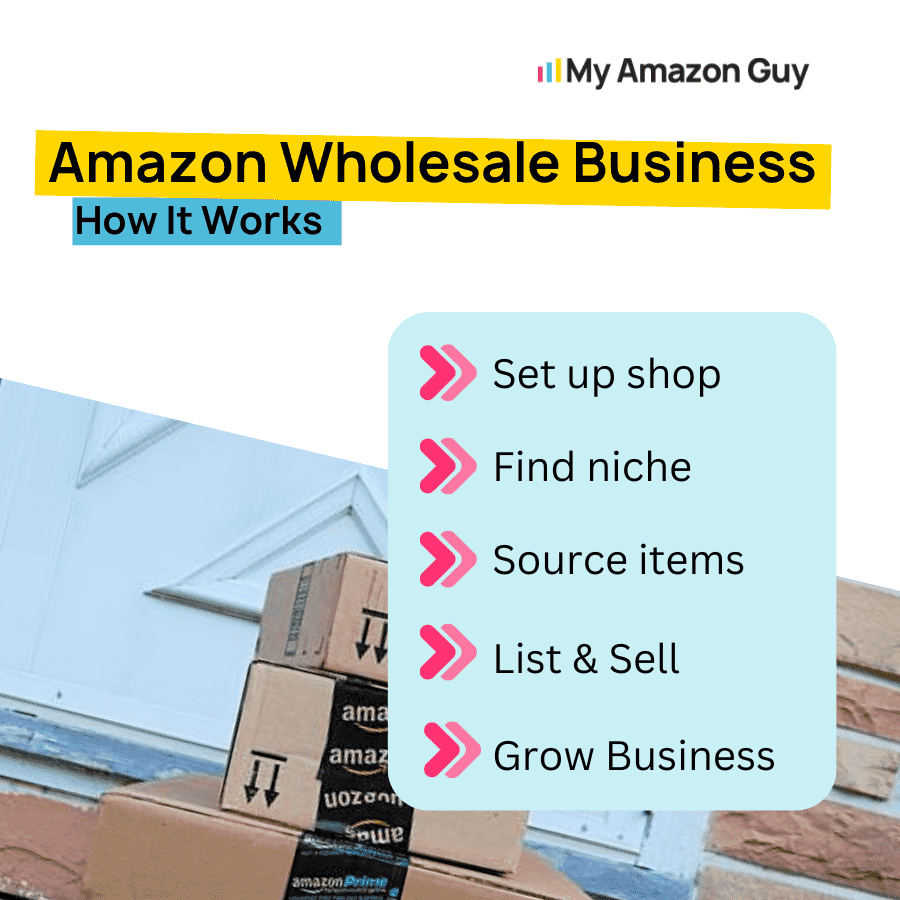
Pros and Cons of Amazon Wholesale Business
Why You Would Sell On Amazon Wholesale:
- Quick setup time: Start selling wholesale with established brands quickly
- Built-in demand: Sell products consumers are already searching for
- Higher overall margins: Streamline fulfillment costs through Amazon FBA
- Flexibility: Experiment with new products and suppliers without building a brand
- Scalable: Focus on growth, not branding and marketing
- Profitable: 89% of Amazon sellers make a profit and 63% become profitable within a year.
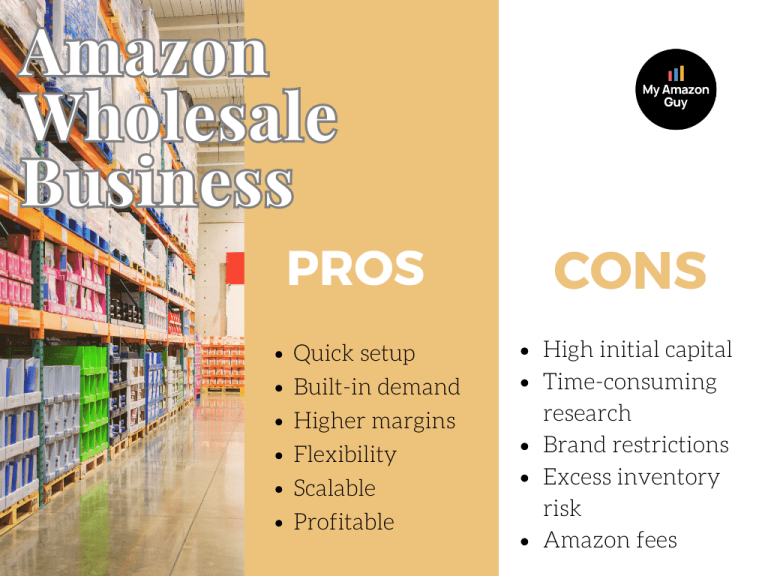
Why You Would Think Twice:
- Initial capital expenditure: Purchase bulk inventory upfront
- Time-consuming research: Find suppliers and negotiate contracts
- Brand restrictions: Risk violating terms and having inventory wiped out
- Excess inventory risk: Carry slow-moving products and burn cash on storage fees
- Amazon fees: Commission fees, fulfillment, and shipping costs eat into margins
Amazon FBA Wholesale vs. Retail Arbitrage vs. Private Label vs Dropshipping
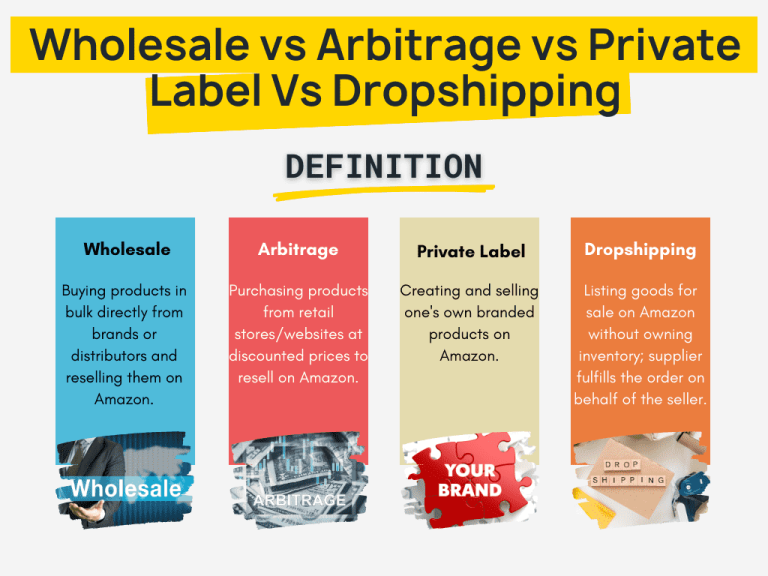
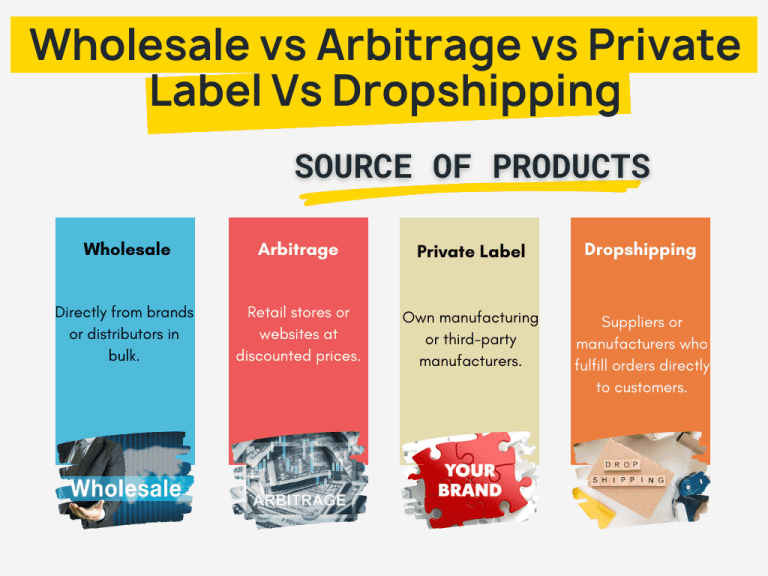
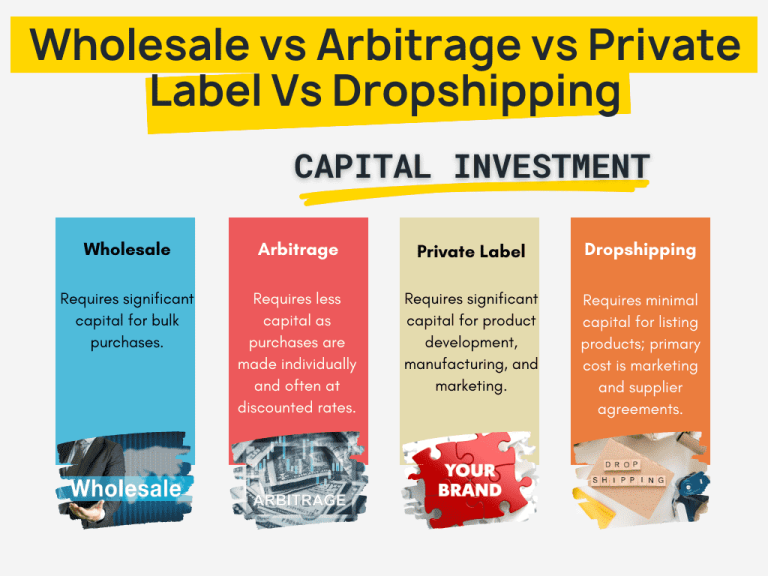
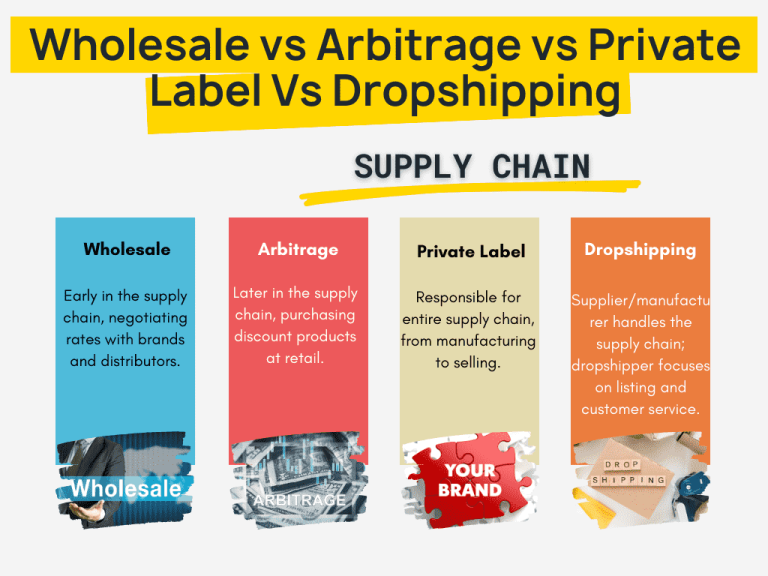
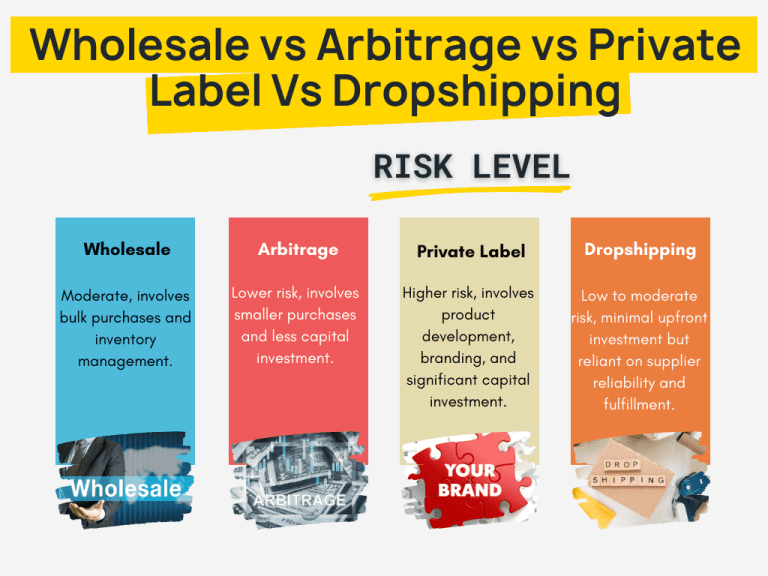

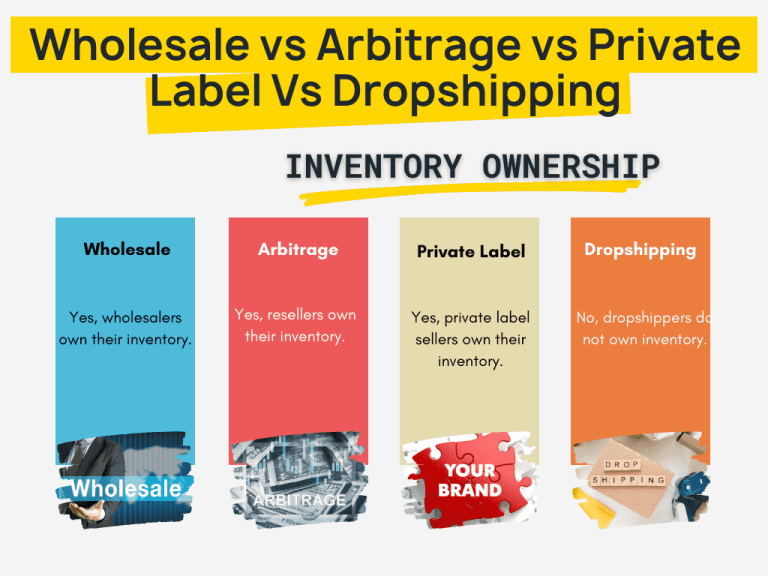
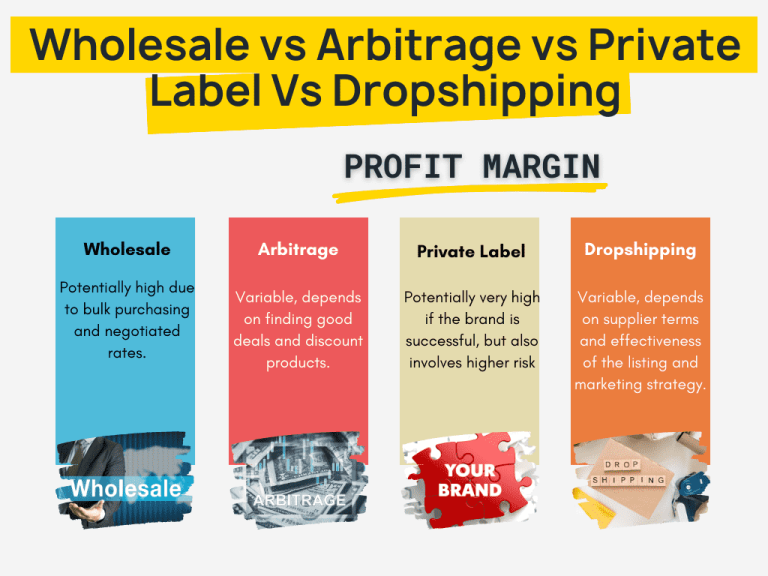
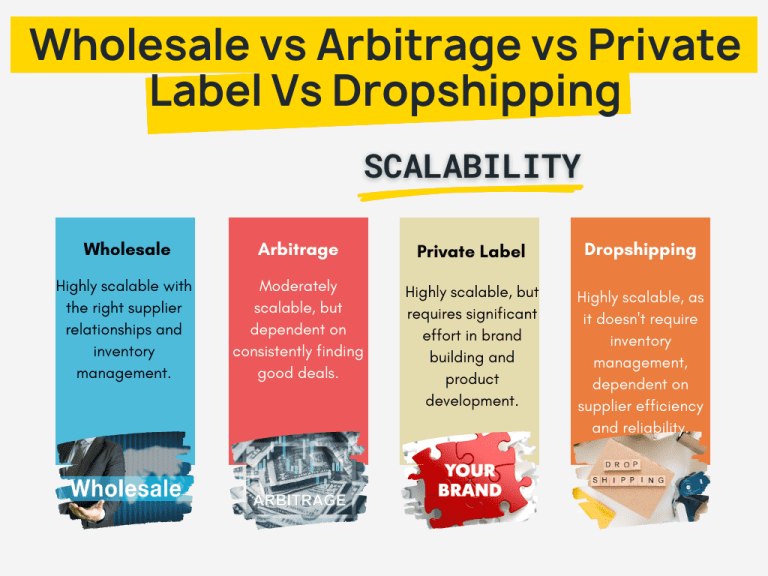
5 Steps To Source & Sell Wholesale Products In Amazon
Step 1: Prepare Requirements
Before opening a wholesale account with a brand, you’ll need to meet the following requirements:
- Register a business or sole proprietorship in your state
- Obtain a resale certificate from your state to purchase products tax-free for reselling
- Apply for an EIN (Employer Identification Number) or Federal Tax Identification Number from the IRS
Most brands and wholesalers will require these documents to verify your legitimacy and allow you to purchase products at wholesale prices.
Step 3: Find Suppliers
To find reliable suppliers for your wholesale business, follow these steps:
- Google the brand name and related keywords to find the manufacturer or direct contact information
- Search industry directories like Salehoo or tools like Jungle Scout’s Supplier database to connect with wholesale suppliers
- Attend trade shows to meet suppliers in person and negotiate favorable rates
- Leverage online B2B marketplaces like Alibaba, Global Sources, and Made-In-China to find suppliers
- Join relevant Facebook groups related to your niche to get supplier referrals from other sellers.
Remember to prioritize US-based suppliers for faster fulfillment times and favor reputable suppliers with good customer feedback.
Consider Chinese suppliers for cost-effective, diverse product offerings, and customization flexibility, especially for high-volume orders with lower minimum order quantities.
Step 3: Find Suppliers
To find reliable suppliers for your wholesale business, follow these steps:
- Google the brand name and related keywords to find the manufacturer or direct contact information
- Search industry directories like Salehoo or tools like Jungle Scout’s Supplier database to connect with wholesale suppliers
- Attend trade shows to meet suppliers in person and negotiate favorable rates
- Leverage online B2B marketplaces like Alibaba, Global Sources, and Made-In-China to find suppliers
- Join relevant Facebook groups related to your niche to get supplier referrals from other sellers.
Remember to prioritize US-based suppliers for faster fulfillment times and favor reputable suppliers with good customer feedback.
Consider Chinese suppliers for cost-effective, diverse product offerings, and customization flexibility, especially for high-volume orders with lower minimum order quantities.
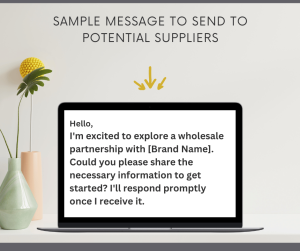
Add Value to the Brand
- Identify problems you can help solve, such as poor product images or SEO issues
- Offer to grow their business by launching new products or improving existing ones
- Show how you can help with Amazon-specific issues, such as enrolling them in Brand Registry
Follow Up and Negotiate
- Be prepared to follow up and negotiate even if the initial response is negative
- Demonstrate your value by highlighting your expertise and ability to improve their listings and brand presence on Amazon
- Use examples of your past work or proven ability to optimize listings and increase sales on Amazon
When a Brand/Supplier Says “Yes”
- Get a price list, MOQ, and ordering instructions
- Calculate potential profit per sale once you have wholesale costs
When a Brand/Supplier Says “No”
- Don’t give up! Continue to follow up every few weeks or so
- Demonstrate your value and show how you can help improve their listings and brand presence on Amazon
Invoicing
- Finalize your invoice by making any necessary changes to the products you’re purchasing from your supplier, based on the final pricing they offer.
Get Products to Amazon
Amazon FBA
Integrating Amazon FBA with your wholesale business simplifies warehousing and shipping by leveraging Amazon’s vast network and resources. Here’s a step-by-step guide on how to get your products to Amazon:
- Ship palletized inventory to Amazon’s nearest fulfillment center: Send your products in bulk to Amazon’s fulfillment center, eliminating the need for individual product packaging.
- Amazon handles picking, packing, and shipping: As sales come in, Amazon will pick, pack, and ship your products to customers.
- Automation keeps overhead costs in check: As sales scale, Amazon’s automation systems keep overhead costs under control.
Oversized Products (ineligible for Amazon FBA)
- Utilize Prep Centers and 3PL (third-party logistics) providers: Partner with Prep Centers and 3PL providers that specialize in storing and fulfilling large or heavy products.
- Store pallets and fulfill orders as they come in: 3PL providers will handle storage and shipping for oversized products, ensuring timely and efficient fulfillment.
Here is a comprehensive list of 3PL service providers:
Step 5: Calculate Potential Amazon Wholesale Profit
Determine Your Pricing
- Set your price within 2% of the current Buy Box price
- Use Jungle Scout Extension and Product Tracker data to determine average price fluctuations
Understand Fees
- Use Amazon’s FBA calculator to determine product costs, including Amazon fees
- Calculate your cost per unit after costs and fees
Determine Profitability
- Use Amazon’s Revenue Calculator to determine net profit and net margin
- Target a minimum net margin of 15-20%
Estimate Monthly Sales
- Determine product sales estimate using Jungle Scout Extension or free Sales Estimator
- Divide sales estimate by number of sellers on the listing + 1 (yourself)
Understand Turn Rate
- Keep only 2-3 months of sales in stock to avoid costly storage fees
- Monitor inventory levels and reorder as needed.
Choose the Right Business Structure for Your Amazon Wholesale Business
When planning to start an Amazon wholesale business, it’s essential to choose the right business structure to protect your personal assets and ensure compliance with tax laws.
Consider forming an LLC (Limited Liability Company), which provides liability protection, separates business and personal expenses, and is easy to set up.
An LLC allows you to scale your business and switch to a C Corp or S Corp if needed.
Start Your Amazon Wholesale Business Today!
Building a successful wholesale business requires dedication, hard work, and continuous learning. Follow the steps above and watch out for more Wholesale FBA Business to be well-prepared to identify profitable product niches, build strong supplier relationships, and drive sales and revenue growth.
Ready to take your business to the next level? Our team at My Amazon Agency can help you launch and optimize your product listings, identify profitable opportunities, and more. Contact us today to schedule a consultation and let’s work together to achieve your e-commerce goals!


